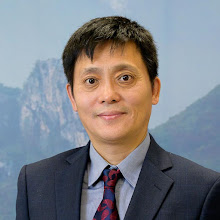Today is World Osteoporosis Day. Osteoporosis is a global health issue, and with the increasing aging of the population, its incidence continues to rise. According to the International Osteoporosis Foundation (IOF), about 200 million people worldwide suffer from osteoporosis. Every three seconds, someone experiences a fracture due to osteoporosis.
There are
many causes of osteoporosis. Advancing age, decreased estrogen levels in
postmenopausal women, and vitamin D deficiency are well-known risk factors.
However, I would like to draw attention to another often-overlooked cause of
osteoporosis, hoping to raise awareness among both doctors and patients.
Over the
past two years, I have seen several patients diagnosed with osteoporosis, one
of whom even suffered a pathological lumbar fracture. The common factor among
these patients was long-term use of proton pump inhibitors (PPIs), a class of
Western medications used to suppress stomach acid.
Studies
have shown that long-term PPI use may be associated with an increased risk of
hip, spine, and overall fractures. This may be due to reduced calcium
absorption or a direct effect of PPIs on bone cell function [1]. Research has
reported that five commonly used PPIs in clinical practice have varying degrees
of adverse effects leading to osteoporosis [2].
There are
several possible mechanisms by which PPIs may induce osteoporosis. First,
gastric acid plays an essential role in the ionization of dietary calcium,
which is critical for calcium absorption. PPIs, by inhibiting gastric acid
secretion, may interfere with this process, thereby impairing calcium
absorption[3]. The second possible mechanism is that PPIs directly affect bone
metabolism. Studies have found that omeprazole may increase bone resorption by
upregulating osteoclast gene expression and promoting the release of calcium
ions into the bloodstream, thus influencing bone cells [4].
To prevent
PPI-induced osteoporosis, there are two possible strategies. One is to use H2
receptor antagonists as an alternative to PPIs, which may reduce the risk of
osteoporosis, though long-term use may cause other side effects. Another
approach is to use natural herbal medicines as substitutes for Western
acid-suppressing drugs.
Traditional
Chinese Medicine (TCM) has shown great potential in both the prevention and
treatment of osteoporosis, with its multi-target and multi-pathway regulatory
effects. Active compounds in Chinese herbs—such as flavonoids, polyphenols,
saponins, and polysaccharides—can modulate key signaling pathways including
Wnt/β-catenin and RANKL/OPG. These effects promote osteoblast differentiation,
inhibit osteoclast activity, alleviate oxidative stress and inflammation, and
improve gut microbiota imbalance, ultimately restoring bone microenvironment
homeostasis [5].
In my
previous blog posts, I have discussed the mechanisms by which Chinese herbalmedicine can prevent and treat vitamin D deficiency, as well as its therapeuticeffects on osteoarthritis. On this World Osteoporosis Day 2025, I would like to
remind everyone be aware of PPI-induced osteoporosis—do not harm your
bones in the process of protecting your stomach.
References
- Saowanee N. et al. Proton
pump inhibitors and risk of fracture: a systematic review and
meta-analysis of observational studies. Am
J Gastroenterol. 2011 Jul;106(7):1209-18. - Jingkai Di et al. Evaluating
the risk of osteoporosis-related adverse events with proton pump
inhibitors: a pharmacovigilance study. Front Pharmacol. 2025 Jul
11;16:1582908.
- G. Graziani et al. Effect
of gastric acid secretion on intestinal phosphate and calcium absorption
in normal subjects. Nephrol Dial Transplant. 1995;10(8):1376-80.
- Mohamed I. Zanaty et al. Effect
of Omeprazole on Osteoblasts and Osteoclasts in vivo and in the in vitro
Model Using Fish Scales. Biochemistry (Mosc). 2021
Oct;86(10):1192-1200.
- Chaoqun Song et al. The
role of active constituents in traditional Chinese medicine for primary
osteoporosis: a mechanistic review. Front Endocrinol (Lausanne). 2025
Sep 16;16:1647984.







